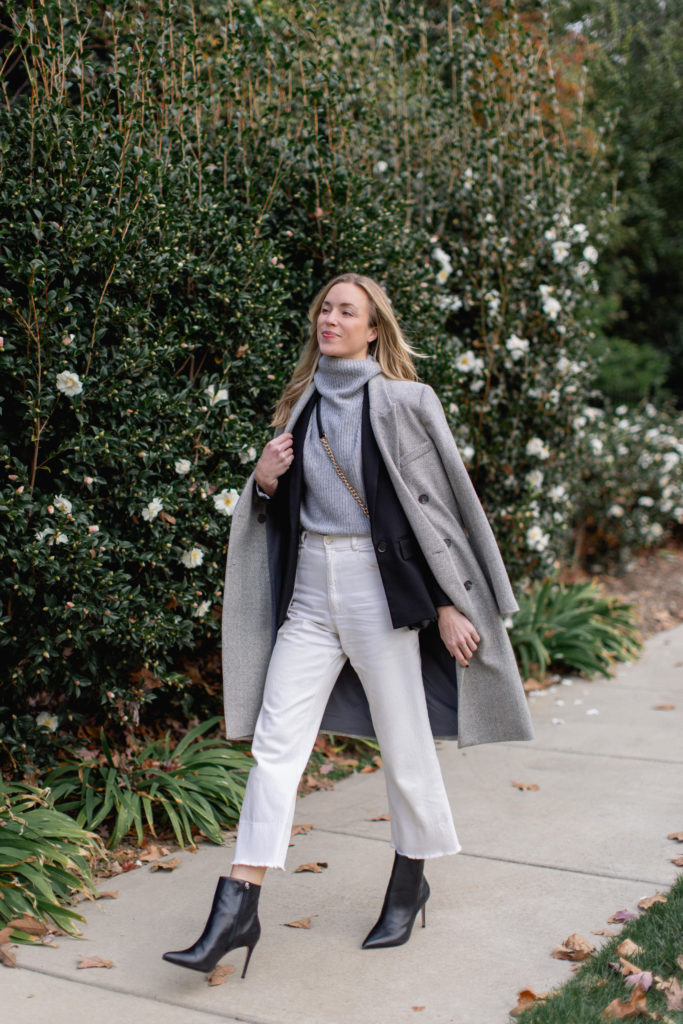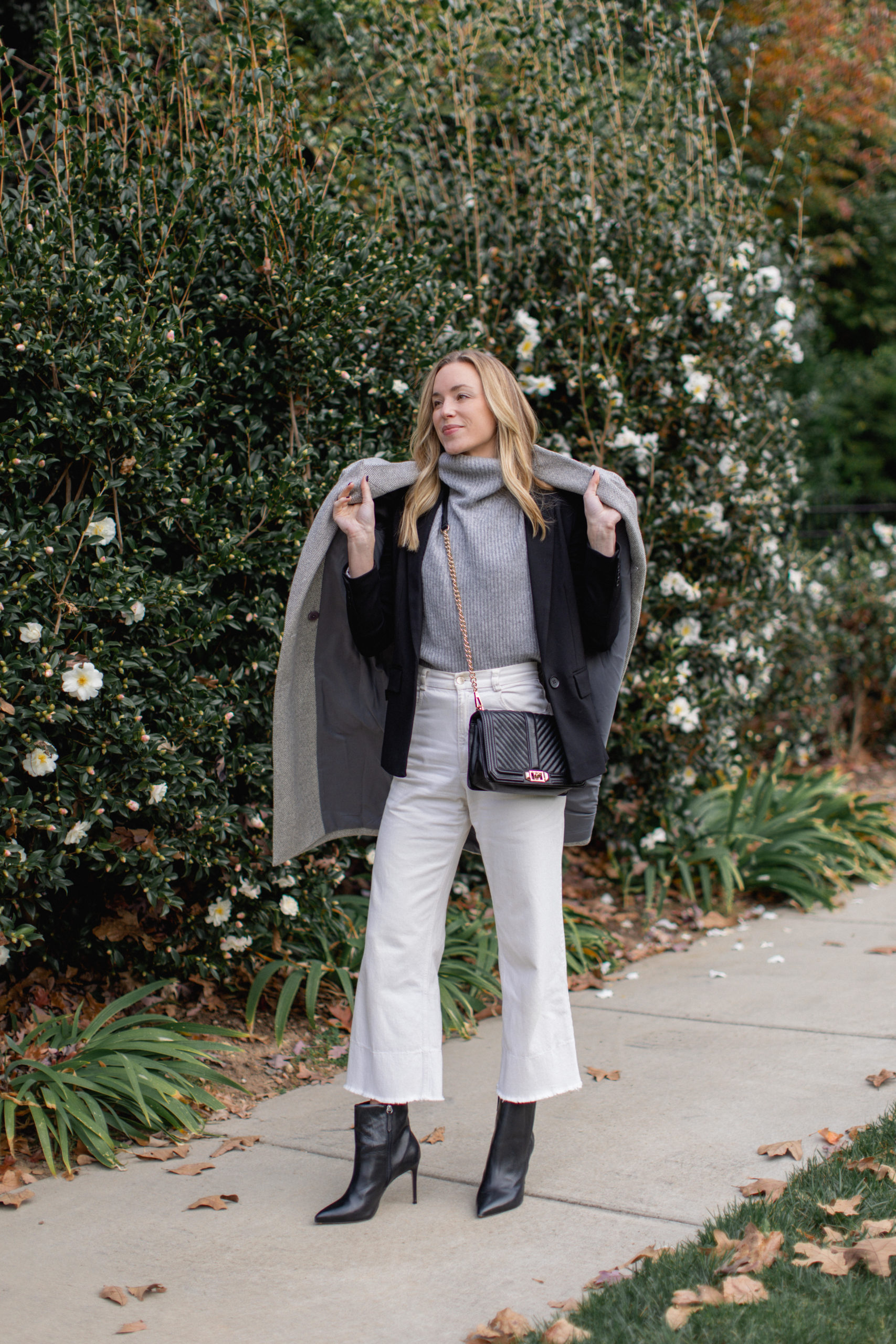
As someone who naturally runs cold, I’m always toting an extra layer or two, especially in the colder seasons. Over the years I’ve been through my fair share of trial and error in learning how to layer clothes functionally and fashionably, but it has been the gift that keeps on giving!
Layering can have a different purpose in every look, from adding warmth to creating interest, elongating your figure, and minimizing certain areas. Whatever the end goal, the main challenge is usually layering without unnecessary bulk.
Since peak layering season is upon us, today I’m sharing five styling tricks to help you master layering your clothes. Plus, inspiration from a double layered look I wore recently!


Outfit Details: Jenni Kayne Coat (old, similar here and here), Central Park West Blazer (old, similar here), Rag & Bone Sweater (old, similar here and here), Rachel Comey Jeans, Schutz Boots, Rebecca Minkoff Bag
How to Layer Clothes
1. Keep It Balanced
If you get one takeaway from this guide, let it be this one.
Balance is all about the visual distribution of an outfit. The oversized trend completely ignores this rule, but I live by it!
Examples of balance are a fitted turtleneck with a wide-leg pant or flowy skirt and a chunky sweater with a structured leather skirt.
Keep balance in mind when choosing your coats and jackets, too. With the chunky turtleneck example, I’d reach for a structured outer layer with a clean silhouette—nothing too boxy to help taper the turtleneck.
If I’m doubling up on outer layers (such as a blazer under a camel coat), I try to keep my pants and top more fitted.
2. Know Your Color Theory
The best layered looks draw on a pleasing color scheme, whether monochrome, complementary, analogous, or triadic (we’re going back to the 6th-grade color theory here!).
The color scheme of a layered look can begin with a solid or a printed piece, such as a beautiful plaid coat paired with base layers and accessories in solid hues that echo the coat’s colorway. I also recommend keeping a look cool all over or warm all over when possible.
3. Mix Up Different Textures
Repeating one texture throughout a look can work, but it’s usually done best in suiting. Otherwise, mixing various seasonal textures is essential to create interest in a layered outfit!
For example, a silk satin skirt paired with a cashmere sweater looks incredibly luxe. It’s made cozier with a belted wool camel coat and even more interesting with the introduction of a third texture in a leather clutch and heels.
Keep fabric in mind when choosing finishing details, too. Scarves are the most obvious example. Look for fabrics that will lay flush against your clothing (cashmere and silk blend) while also keeping you warm.


3. Play with Proportion
Fashion is a visual medium just like photography, benefitting from compositional guidelines like the rule of thirds. The easiest way to think about the rule of thirds is that you never want to cut your body in half. Instead, have one piece take up 2/3 (usually the bottom, like jeans or a skirt) and one piece takes up 1/3 (usually a top).
Once the base feels proportional, you can move on to the top layer. When picking outerwear, the most flattering lengths will hit at these third lines, too: at your natural waist, an inch or two below the hemline of a skirt or pant, just below the knee, or right at the bottom hemline of your skirt or pant.
5. Don’t Forget Finishing Touches
When I pick layering pieces, my goal is usually to create a combo that adds extra warmth, looks chic, and preserves my shape. Subtle finishing touches or ‘styling’ can make a huge difference!
Define the waist with a belt, a french tuck on that middle layer, or a heart necklace to draw the eye down. Roll up the sleeves of a long sleeve button-down or cardigan, or scrunch up your sweater sleeves to expose the wrists (this is slimming). Eliminate bulk by draping a thicker scarf around your neck instead of looping it in front.
I hope you enjoyed these tips on how to layer clothes, especially as we approach cold weather! What layering issues do you run into? Let me know how I can help you with the art of layering and leave any questions in the comments.










Your blog is like a breath of fresh air in a sea of negativity and pessimism Thank you for being a source of light and hope